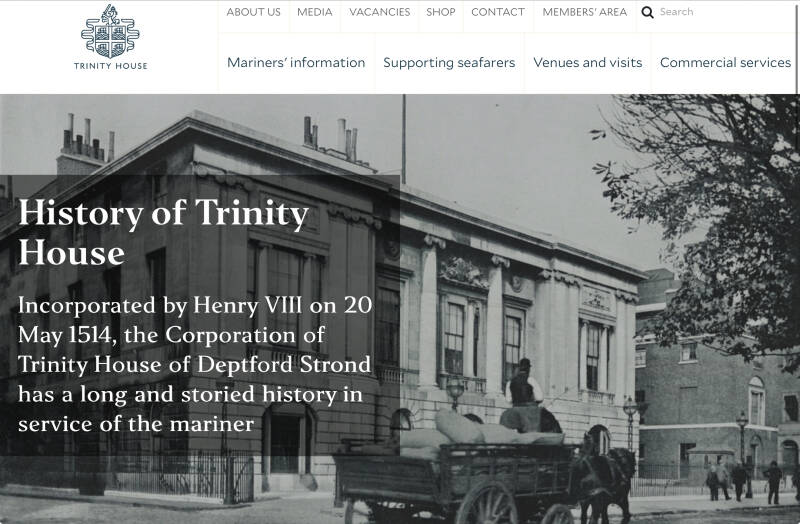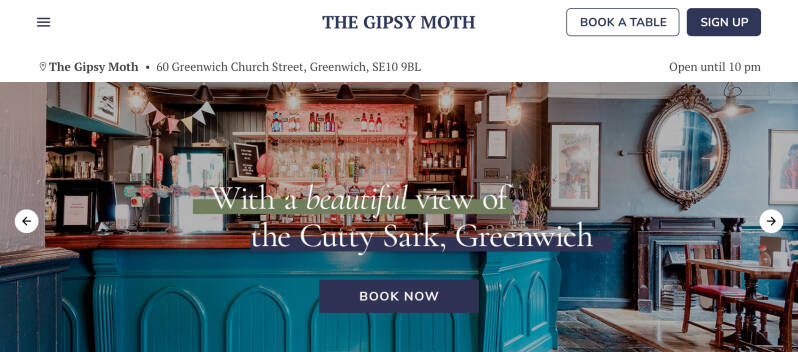
THAMES PATH: DEPTFORD to GREENWICH an on, up to NORTH GREENWICH (Cable Car)
On this chapter:
-riverside towards CHARLTON and the THAMES BARRIER
-diversion to GREENWICH TOWN CENTRE, GREENWICH PARK and BLACKHEATH
-shortcut across the NORTH GREENWICH PENINSULA to ECOLOGY PARK
The North Greenwich or Greenwich Peninsula area is dealt with, as well, in SE LONDON (3). See the chapter dedicated to the route from Blackheath to Greenwich Peninsula
Along STOWAGE (street)




Student accommodation.
STOWAGE?. STORAGE!
The street still follows a winding route dating from the 17th century (the beginning of the entire area as a trade and seafaring one. LThe site between the street and the river has been, together with a similar site on the Greenwich side of Deptford Creek, transformed in the last few years by the Greenwich Reach development, linked with the regeneration programme called Creekside Renewal . The creek has been cleaned up,, a riverside walk has been created, and a community boatyard; a new Creekmouth footbridge to the Greenwich side, where a massive development designed by Broadway Malyan has been built. The original project included a cruise liner terminal, hotel, shopping, a cinema complex, and other leisure and entertainment facilities. But, as on the Stowage site, it has resulted only in a new housing development.
This site has from the 16th through to this century been one of the most important in Deptford's history, having been the base for Trinity House, the East India Company, the General Steam Navigation Company, and a pioneering Power
The "Stowage" name refers to a storage area, particularly associated with the East India Company and the General Steam Navigation Company. The name likely originates from the historical use of the area for storing goods and materials, especially during the East India Company's presence from 1600 until 1782. The area encompassed a wider region, including the site of Deptford Power Station, which was built on the former warehouse site,
Site of TRINITY HOUSE
The guild of mariners was cheer in 1511, and it was given a charter by HVIII IN 1514.The CORPORATION later became respo for licensing the Thames pilots, charting the coastline, erect. erecting buoys and all type of navigational structures throughout England and Wales, and clearing ballast from the river.
In 1660 it moved to TOWER HILL, but every TRINITY MONDAY a new council was elected here until mid 19th c.
Site of DEPTFORD ‘LOWER GROUND’ ALMSHOUSES
This land, on which the original almshouses at Deptford were built, was in the possession of the Guild before its incorporation by Henry VIII in 1514; the hall and almshouses which formerly stood on the site were built in the 15th century for “decayed Masters of Ships and their Widows.” This triangular plot of land was situated in the Stowage at Deptford, not far from the river. The original almshouses and great hall of the Corporation were demolished and rebuilt in 1660; by 1788 they had become ruinous again and were taken down and again rebuilt on the same site. The residents were removed from these houses about 1863 and the premises were let. Many coloured glass panes from the hall with merchants’ marks survive as the only record of the early Masters and Wardens of the Corporation, and today adorn the windows in the library at Trinity House. Nothing of the Deptford estates remains today.
Site of the EAST INDIA COMPANY
1600-1782. It had the sole trading rights to the EAST INDIES. Later it would become an agency of the Br. Government.
Site of the GENERAL STEAM NAVIGATION COMPANY works
F. here and remained here until 1970, it was the world’s first commercial steamship company.
Riverside
Site of DEPTFORD POWER STATION
In 1889 SEBASTIAN DE FERRANTI established here the first high pressure power station
Statue of Czar Peter the Great




The enigma of the notorious rogue turned charismatic statesman is captured in an impressive exhibition at the National Maritime Museum in Greenwich, which marks the 300th anniversary of the Tsar's eventful visit to England.
One of the lads, he thought nothing of downing a few bevies with his mates, racing them around in wheelbarrows and devastating an expensive, showpiece garden in the process. He was also seen with some of the most desirable women in town, but in true laddish fashion treated his totty with disdain.
But this same Jack-the-Lad, recorded in history as Peter The Great, or Super-Tsar, avidly devoured western culture and technology to transform Russia from a backward country to a world
The Curator of the exhibition Helene Mitchell explained: "If Peter the Great were alive today he could best be likened to a pop star, trashing hotel rooms perhaps, but enjoying a huge public following.
"In genius and energy, Peter was the wonder of his age, a legendary figure. He created a personality cult-not just in his native Russia, but throughout western Europe."
Peter was the first Tsar of Russia to explore western Europe. His predecessors had been autocratic rulers of a vast, largely unknown land which was essentially oriental in outlook.
Only 25 years old when he left Moscow in 1697, the young ruler led a Great Embassy of some 250 compatriots and a few foreign advisors to Amsterdam, London and Vienna. The Tsar was ostensibly in search of allies for his war against the Turks, but Peter was mainly interested in acquiring knowledge and skills from technologically advanced Europeans.
He was eager to avoid the constraints of protocol and travelled incognito. But his great height-six ft seven ins-and eccentric behaviour ensured widespread curiosity.
Peter visited at a time when England was one of the most powerful countries in the world. The economy was booming, the Royal Navy ruled the seas, and Peter was determined to take some of England's know-how back to Russia.
Peter's yacht anchored near London Bridge on 11 January 1698 and he was greeted by King William III.
From this point, Peter and his entourage experienced as much as they could of the English way of life during their stay of almost four months. Peter was inquisitive about most things —navigation, coinage, gun-founding, religion and medicine-but his main interest was shipbuilding.
This led him to spend much of his time in Deptford, living in diarist John Evelyn's home at Sayes Court, which was next to the Royal Dockyard
Peter had worked in the yards of Amsterdam and Zaandam, where methods were practical, but wanted to learn the theories underpinning these skills.
He acquired accurate ship plans to take back to Russia and received instruction from the leading master shipwrights in the land.
He went on to the Royal Observatory at Greenwich to discuss mathematics, navigation and astronomy with Edmund Halley and John Flamsteed, the first Astronomer Royal.
He avoided protocol where he could, paying only one official visit to Kensington Palace.
He sought out places that stimulated him and satisfied his burning curiosity, often going by foot and asking questions of people he met on the streets or in the taverns.
He sought the numerous small, specialist workshops in Clerkenwell and Fleet Street, collecting new instruments and acquiring the latest skills.
Peter also spent time at the Royal Mint-then at the Tower of London, Woolwich Arsenal, the Royal Society and Lambeth Palace.
He observed democracy at work in Westminster, but was equally intrigued by the skills of London's barbers and undertakers.
Peter's exuberance meant he also played hard, spending much of his visit drinking brandy and peppers.
While at Sayes Court he left carpets smeared and stained with ink, paintwork chipped away, windows broken, burned 50 chairs on a stove and tore paintings he used for target practice.
He destroyed Sayes Court gardens, which had taken 45 years to lay out. He flattened Evelyn's pride and joy, the nine ft high holly hedges, and ravaged the bowling green, bushes and trees during wheelbarrow races with his entourage.
Royal Surveyor Sir Christopher Wren estimated damage to the house and garden at £350 and ninepence—a huge total at the time.
Peter also caused damage to the buildings and various navigational instruments during his visit to the Royal Observatory.
He had a leading actress of the day, Laetitia Cross, as his mistress. She moved in for the duration of the stay on the understanding she would be paid handsomely. However, Peter's gift was measly and he ungraciously remarked: "This harlot served me indifferently with what she has to give which is worthless."
The exhibition was at the Queen's House in the grounds of the museum. Exhibits included an impressive painting of Peter by Sir Godfrey Kneller, from the Royal Collection; outsized gloves worn by Peter; and two ship models, presented to Peter by King William, and loaned from collections in St Petersburg.
Various medals, artefacts and engravings are included, and a number of historic letters, among them Wren's invoice for the damage at Sayes Court.
An epic Victorian painting of Peter by Maclise shows the Tsar at work in Deptford Dockyard, the sombre figure of William III to the right and his mistress Laetitia Cross to the left. but the painting has many anachronisms. They include the roof over the dockyard -built after Peter's visit—and a sextant which was not invented until later.
Peter's cult status meant a Petrine vogue developed in the decorative arts, and commemorative pieces were produced and bought in abundance.
Peter left London to start a remorseless drive to drag Russia into the 18th century. The price was high, but he founded a great city and a considerable navy.
He forced social change and insisted on westernisation. At his death in 1725, Russia coutd be said to have joined Europe.
Despite his achievements, history remains ambivalent as to his character and methods.
He undoubtedly rejuvenated his Russia, leaving a lasting impression on his contemporaries...and hey, if he could cause that much mayhem with a wheelbarrow, what would he be like on a powerful motorbike?!
DEPTFORD CREEK is the mouth of the RIVER RAVENSBOURNE
This lost river of London rises at Caesar's Well in KESTON PONDS (which is 4 miles south of Bromley town centre) and then flows through the London Boroughs of Bromley, Lewisham and Greenwich where it then joins the River Thames at Deptford, where its 1/2 mile muddy tidal reach is known as Deptford Creek.
Here: a site of battles and shelter for invading fleets.
From MILLENIUM QUAY to NEW CAPITAL QUAY.
The new Swing Bridge
Costing £5 million a cable-stayed swing bridge has been assembled (fabricated in YORKSHIRE) in 2014 to enable pedestrians and cyclists to cross the tidal Deptford Creek safely. The crossing will enable those using the Thames Path to remain near the riverbank as they cross the creek rather than venture inland to use Creek Bridge. The new pedestrian crossing at the mouth of the creek is a 44 m long, 3.6 m wide single-mast, cable-stayed swing bridge. It has been positioned so that if it were to remain closed during high tide it would still provide 2.8 m of clearance above mean high water during spring tides, according to figures provided by Flint & Neill. Ramps and stairs will provide access to the deck of the bridge from both sides of the Creek.
A sculptural form suggestive of ORIGAMI. The bridge’s superstructure is a sculptural steel box made of painted weathering steel. The front span is 44 m long and 700 mm deep. Counterbalancing the front span is a 9 m long, 1.2 m deep back span containing 120 metric tonnes of steel. There is a 15 m tall mast that extends above the pier and holds three cables that attach to the front span in order to hold up the nose of the bridge as it rotates.
While it is common to light such bridges with floodlights at night – to highlight their form – the Environment Agency is keen to protect fish species in the area by not spilling a lot of artificial light on the river. Functional lighting has been kept to a minimum. The bridge includes discreet handrail lights so that people can use the bridge at night, but there are no floodlights and the soffit of the bridge has been created using a dark colour palette to minimise reflections into the water.
The control system is on the Eastern side. A triple-locked and password protected system, operated by the same personnel that operates the CREEK ROAD bridge.
Residential. Shops and eateries
Thames Street
ESTATE
WOOD WHARF
It looked industrial not so long ago.
Horseferry Place

Along the main road
Deptford Creek Bridge
FERRY to PETER BOAT ALEHOUSE. 1804. Footbridge. 1809. Larger bridge, and BRIDGE STREET (now CREEK ROAD) was put through to GREENWICH.
With its control tower, itvdates from 1954. The first roadbridge here was built here in 1815. A footbridge existed since 1804. PRIOR AGGREGATES occupies BREWERY WHARF
THE HOY INN P.H.
After the footbridge
Greenwich
Along Creek Road
ST.ALFAGE with ST.PETER SCHOOL
Thriller writer EDGAR WALLACE was a pupil here. He was born in GREENWICH, in 1875, and grew up in demolished NORWAY COURT
THE GATE CLOCK, A JD WETHERSPOON PH
UP THE CREEK: COMEDY CLUB
Site of the FERRY
There has been a ferry service between the southern tip of the Isle of Dogs and Greenwich since at least the 17th century, the early ferry was called Potter’s Ferry whose rights were coveted by Watermen who wished to control this lucrative route. Up to 1812 the Ferry was limited to foot passengers but then a horse ferry was established.
One of the most ambitious ferry crossing was proposed in the 1880s when the Greenwich Ferry Company developed a ferry system that would enable large amounts of cargo to be transferred across the river. The ingenious part of the ferry was the landing platforms which was raised and lowered according to the tide. This allowed the heavy trucks and carriages to have a smooth access to and from the boat.
BILLINGSGATE DOCK
In existence since the Middle Ages, it was widened and improved following the closure of the THE SHIP DOCK

Here starts the GREENWICH TOWN CENTRE round walk/cycle route. If you wish to follow it go to the chapter SOUTH LONDON VILLAGES:
The content of this riverside stretch of the route is dealt with in that chapter

Another route starts here to visit GREENWICH PARK passing the ROYAL OBSERVATORY and continuing on to Blackheath Village
GREENWICH FOOT TUNNEL to the ISLAND GARDENS, ISLE OF DOGS
CUTTY SARK
You are now in the Town centre of Greenwich


Greenwich Pier




NEW ZEALAND MEMORIAL
BELLOT MEMORIAL
THE OLD ROYAL NAVAL COLLEGE
Site of ROYAL PALACE, then ROYAL HOSPITAL (care home) for seamen , then ROYAL NAVAL COLLEGE or “university of the Navy”, now the GREENWICH FOUNDATION, housing GREENWICH UNIVERSITY and TRINITY LABAN Conservatoire of Music and Dance
Visit Greenwich Information Desk, GREENWICH MUSEUM, shop and restaurant
Walter Raleigh statue
5 feet WALK
WATERGATE
KING CHARLES COURT, now housing TRINITY LABÁN Conservatoire
STATUE OF KING GEORGE III
QUEEN ANNE COURT (WING), now housing the UNIVERSITY OF GREENWICH
To the rear of these two courts, two more courts:
KING WILLIAM COURT, which contains the PAINTED HALL
QUEEN MARY COURT, which houses the CHAPEL OF ST.PETER and ST.PAUL
STATUE OF ADMIRAL HORATIO NELSON
THE TRAFALGAR TAVERN
Park Row
TRAFALGAR QUARTERS. Former ROYAL HOSPITAL offices, now residential
Crane St.
THE YATCH P.H.
Thames flood level markers (3 memorials)
TRINITY HOSPITAL (ALMSHOUSES)
POWER STATION
ANCHOR IRON WHARF
THE CUTTY SARK P.H.
MORDEN COLLEGE ESTATE: property marks
PORT OF LONDON AUTHORITY BUILDING
THAMES PATH 4: DEPTFORD to GREENWICH TOWN CENTRE and on to NORTH GREENWICH (O2 AND CABLE CAR)……………

Pelton Road

The THAMES PATH continues… Welcome to the GREENWICH PENINSULA

Buses along the main road, WOOLWICH ROAD

You are approaching NORTH GREENWICH LU STATION



Possible shortcut through the NORTH GREENWICH PENINSULA to ECOLOGY PARK and THAMES PATH, EAST side of the Peninsula

More about this area, and possible diversion to Blackheath Standard
WOOLWICH > BLACKEATH > NORTH GREENWICH ROUTE: https://temp-knhqkfetdrvzskuirrbc.webadorsite.com/blackheath-paragon-morden-college-kidbrooke-royal-standard-east-greenwich-north-greenwich
Again, the riverside, along the banks of the NORTH GREENWICH PENINSULA
ENDERBY WHARF and HOUSE
Named after the ENDERBY brothers pioneers of Atlantic whaling, and discoverers of ENDERBY LAND and ENDERBY ISLAND.
The ENDERBYS of HAMILTON HOUSE
See WEST GROVE (BLACKHEATH to GREENWICH)
In Herman Melville's Moby Dick, the whaling ship Samuel Enderby is encountered by the Pequod and serves as a foil to Ahab's obsession. Its captain, Boomer, is a former whaleman who has lost an arm to Moby Dick but has since moved on and wants nothing to do with the whale.
First submarine Atlantic cable






In the 1850's the site was bought by Glass Elliot, a pioneering company in the the new submarine cable industry, and here the first Atlantic cable was made.
Submarine cables were made at Enderby's Wharf until 1975, and for decades white cable laying ships were moored to take on cable for the beds of oceans around the world.
Part of the site was still in use today by Alcatel Submarine Networks.
On the northern part of the works are two interesting buildings, both clearly visible rom the Riverside Walk.
First, proceeding northwards along the Walk, is a brick house c1860 with decorated stone mouldings in the form of telegraph cable around the doorway and on the keystones above each window. The capitals of the pilasters flanking the doorway represent gutta percha leaves, which were used for insulating submarine able.
BRUNEL’s GREAT EASTERN
SS Great Eastern was an iron-hulled steamshipdesigned by Isambard Kingdom Brunel, and built by John Scott Russell & Co. at Millwall Iron Works on the River Thames, London, England. Powered by both sidewheels and a screw propeller, she was by far the largest ship ever built at the time of her 1858 launch, and had the capacity to carry 4,000 passengers from England to Australia without refuelling.
In January 1864, it was announced that the ship would be auctioned off. During the auction, four members of the company board of directors bid $125,000 for the ship and won it, thus acquiring personal control of the vessel. The group then allowed the ship company to go bankrupt, thus separating the ship from the now defunct shipping company and divesting many smaller stockholders. The ship was then contracted out to Cyrus West Field, an American financier, who intended to use it to lay underwater cables.[25] The ship's owners developed a business model whereby they would rent out Great Eastern as a cable layer in exchange for shares in cable companies, ensuring that if Great Eastern succeeded in laying cables, the unprofitable ship could be personally lucrative for her owners.[
The house, built by the ENDERBYS, is now a PUB
CHARLES ENDERBY started a rope manufacture and built the in 1834, though the cement facing is postwar. It is notable for the prominent angled bay, the first floor of which used to command a view of ships coming along the river. Only the upper floor of the bay is original - it was supported on pillars.
The *interior is worth visiting to see the room on the first floor, which has the wide bay projecting towards the river. It is a magnificent octagonal room, beautifully decorated, with slender columns at each corner, a glazed dome above, and fin plasterwork. Outside is an oval landing with two doors curved to the line of the wall. Until recently , Enderby House was part of an industrial plant, and there was normally no access.
MORDEN WHARF



VICTORIA DEEP WATER TERMINAL
The Deep Water Terminal opened in 1966 as a privately owned container terminal receiving containers and unit loads from Europe by ship. To those who used it – like lorry drivers and watermen on the Thames – it was always known as ‘Vic Deep’.
The wharf had a total length of 850 feet (259 metres) providing berths for two cargo ships. The depth of water at the berths was 42 feet (12.73 metres) MHWS (5.6 metres at Chart Datum). On the wharf, the open storage area for cargo was 17.3 acres (7 hectares) which was much larger than on many other wharves in Greenwich. There were two enormous container cranes operating on the wharf, unloading the containers from the ships and storing them on the open cargo accommodation area. From there, articulated lorries transported the containers via the A2 which was only a matter of a hundred yards from the wharf itself.
After the container terminal closed down (probably in the 1990s), the wharf was used by a scrap-iron company. Huge piles of scrap-iron were to be seen piled high on the riverside wharf. The company probably did not realise how heavy the iron was. After a few years of operation, the riverside wall of the wharf collapsed and the contents stacked on it had to be salvaged from the Thames. That put an end to their use of the riverside wharf.
In 1990 the site was taken over by Hanson Aggregates. It can accommodate vessels of up to 8,000 tonnes. In 2017 Construction materials supplier Hanson submitted a planning application to invest £12 million on the wharf, to upgrade and improve the site, along with a full environmental impact assessment. The Victoria Deep Water Terminal is an important strategic site in London which is safeguarded as an industrial wharf
Greenwich Peninsula Golf Range


Not far away, but not on the riverside




The company was formerly called Albion Chemicals. They are distributors of chemicals,
Entrance gatehouse of the BLACKWALL OLD TUNNEL




The tunnel was first planned by Sir Joseph Bazalgette in 1882. The original (now northbound) tunnel was designed by Sir Alexander Binnie for the London County Council and completed in 1897, when it was the biggest underwater tunnel ever constructed. It is 3116 ft long, of which 1221 ft is underwater.
It bestrides the approach to the northbound tunnel. It is a strikingly handsome building of 1897 in a lovely red sandstone, in Art Nouveau style with steep roof and funny angle turrets. Further north, steps lead down to the actual tunnel entrance, built in the same red andstone.
The S bound tunnel was completed in 1967. It is 2.870 ft long, wider than and without the sharp bends of the original tunnel.
MAGAZINE LONDON. Events space
Magazine London is a state-of-the-art venue that can flex to meet your most ambitious ideas. At over 3,000 square metres, the site is one of the largest purpose-built hybrid spaces in London, with four distinctive internal spaces and a riverside Showground. At 9,700 square metres, The Showground has an outdoor capacity of up to 7,000 people, uninterrupted views of the city skyline and is the only site on the Thames that can accommodate drone show take offs.
The UPSIDE DOWN PYLON or “A Bullet from a Shooting Star” artwork has been dismantled
Installed in 2015 as part of the London Design Festival. Its dramatic, inverted stance symbolised both the area’s industrial past and its futuristic aspirations. The dismantling marks a key transition for the Greenwich Peninsula as it enters a new phase of regeneration.
Future developments here
NORTHERN ECOLOGY AREA?
TUNNEL STAIRS? (In historical maps)
Ordnance Court
Site of ORDNANCE WHARF
Ordnance Wharf was once part of Blakely’s Ordnance Works, which made heavy guns between the early 1860s and 1870s.
Drawdock Rd.
DRAWDOCK, SLIPWAY
To the O2 & the rest of the build-up district: DESIGN DISTRICT, EATERIES, UNIVERSITY

Now you can accede easily to North Greenwich LU and bus stations
THE MILLENIUM DOME. now THE O2
BEFORE even the DOME was built… SOIL WASHING.https://www.theyworkforyou.com/wrans/?id=2000-10-10a.26.0#:~:text=Approximately%2030%2C000m%203%20of,treated%20varies%20across%20the%20site.

A perfect chronological history…







Climbing

Ventilation shaft

Ventilation shaft

MILE POST on the GREENWICH MERIDIAN
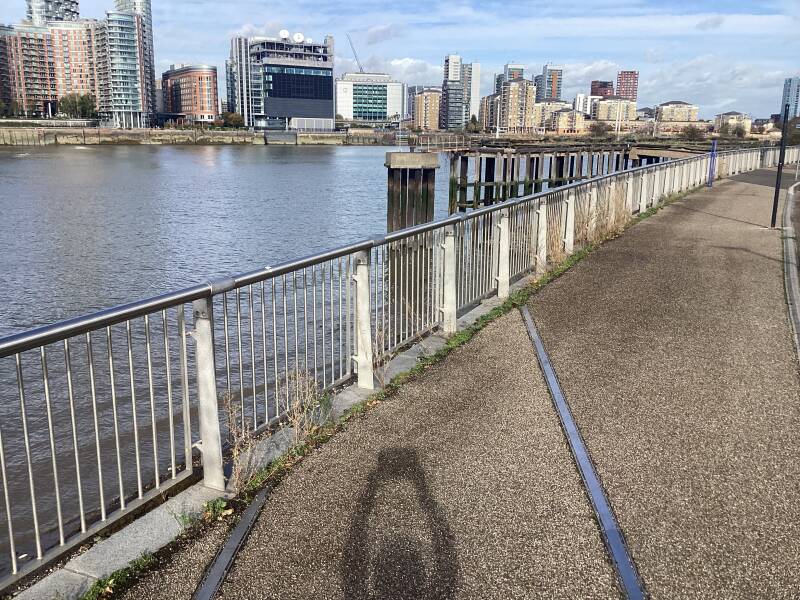
Ventilation shaft. Intercontinental Hotel

GREEN JETTY artwork
In 2000 the pier at Ordnance Wharf was converted into a ‘green jetty’ or nature platform. Turf was laid and native species planted to encourage wildlife. As the pier is not publicly accessible it provides a safe haven for nesting birds including Caspian gulls.
Arora Tower
Site of DRY DOCK (see historical maps)
A SLICE OF REALITY artwork by RICHARD WILSON
View towards the Isle of Dogs








Thames Flood Plain

Natural life on the foreshore

View towards Trinity Buoy Wharf (www.visit-londons-east-end.co.uk)



TRIBE AND TRIBULATION artwork by SERGE ATTUTWEI-CLOTTEY







River traffic signals

Radio London VTS over VHF (Channel 14 Teddington - Crayfordness)

LIBERTY GRIP artwork
Firepit Art Gallery and studios

CABLE CAR




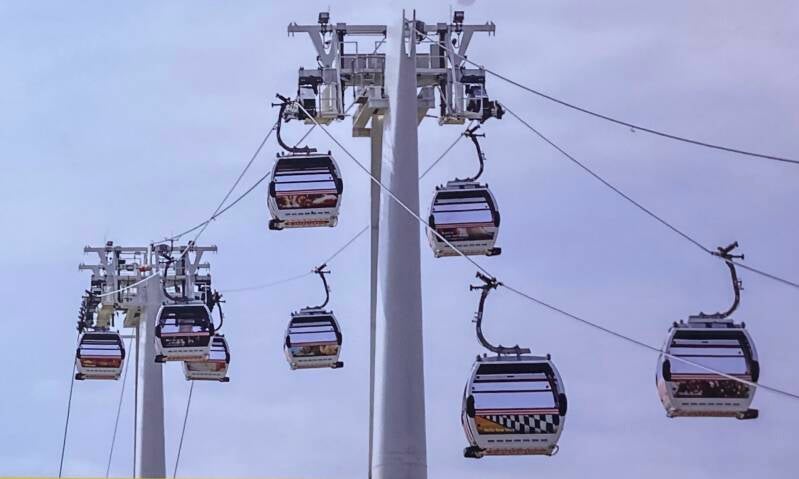





THE MERMAID, artwork by DAMIEN HIRST



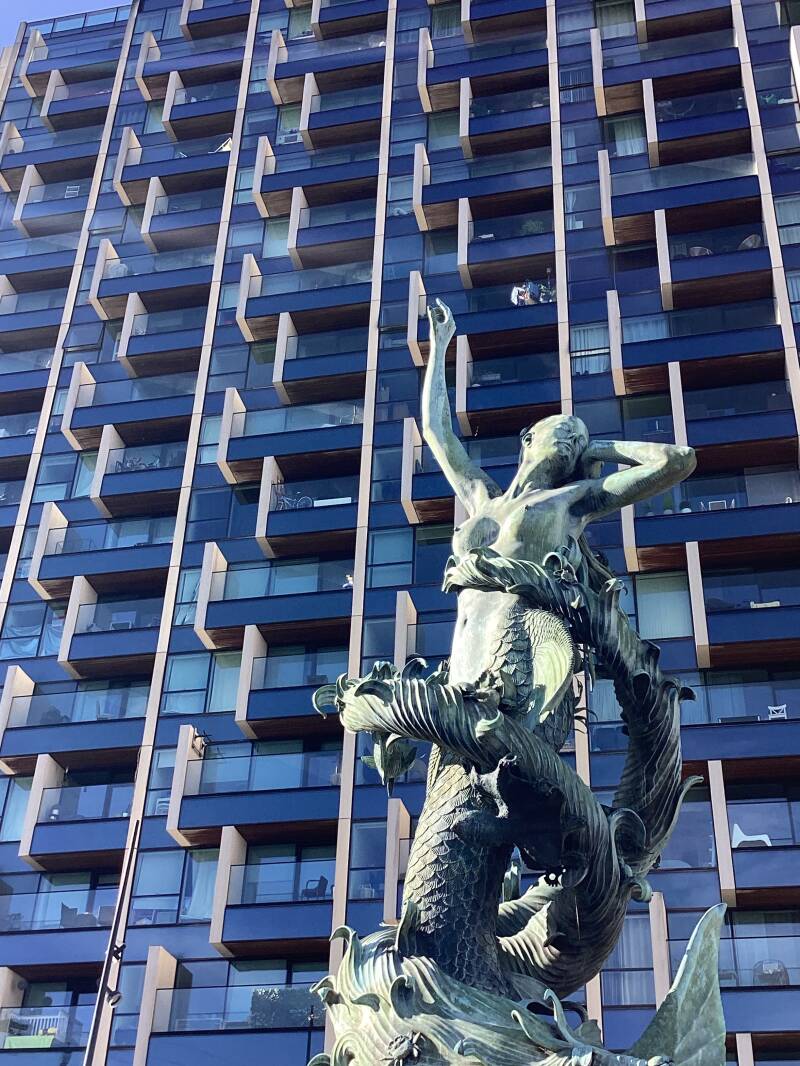

Shelter?. Portuguese pavement?





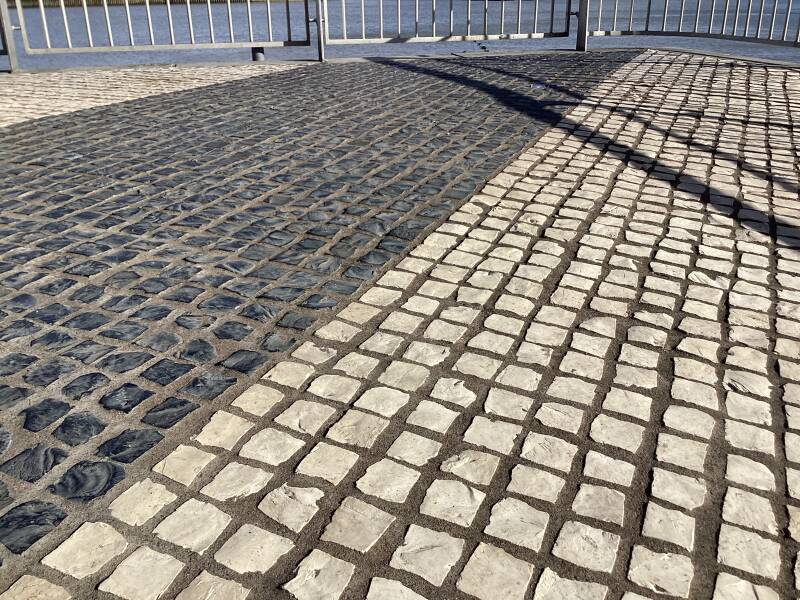
North Greenwich Pier for THAMES CLIPPERS (UBER BOATS)


QUANTUM CLOUD artwork, by ANTONY GORMLIN
Edmund Halley Way
DEMON WITH BOWL artwork, by DAMIEN HIRST







London Cable Car
Also known as the Dangleway[5] and officially as the IFS Cloud Cable Carfor sponsorship reasons,[6][7]is a cable car link across the River Thames in London, England. The line was built by Doppelmayr and the total cost was around £60 million. The service opened on 28 June 2012. It is owned by Transport for London (TfL) and currently operated by FirstGroup.




SILVERTOWN TUNNEL (2025)
I hope you are enjoying this guide!

In case you like photography…

Any Donations to…



